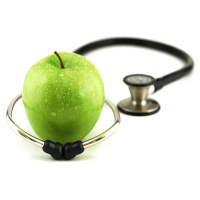Hypotension
 Overview
Overview
Low blood pressure, also known as hypotension, happens when an individual’s blood pressure falls so low that the brain fails to receive enough oxygen.
The heart pumps around 2,000 gallons of blood each day through a person’s veins, arteries, and capillaries, and variations in pressure are natural. Blood pressure is higher during activity, and lower when the body is not as active.
Causes of Hypotension
Low blood pressure may be caused by uncontrolled bleeding, severe infections, pregnancy, heart arrhythmias, heart disease, endocrine disorders, dehydration, taking too much hypertension medication (which is designed to lower blood pressure), or life-threatening allergic reactions. Additionally, certain medications may cause low blood pressure, such as tricyclic antidepressants, beta-blockers, narcotics, and medications which treat Parkinson’s disease.
Additionally, postural or orthostatic hypotension can be caused when a person stands up from a sitting or prone position and their systolic blood pressure drops in a drastic manner. Older persons may experience what is called postprandial hypotension, which occurs after they eat a meal.
Symptoms of Hypotension
Risk factors for low blood pressure include the following: uncontrolled bleeding, severe allergic reaction, severe infection, heart problems, hormonal disorders, pregnancy, dehydration, and taking medications such as tricyclic antidepressants and beta blockers.
How Hypotension is Diagnosed
Blood pressure is easily measured and diagnosed using a sphygmomanometer, which inflates around the arm and has a meter to provide the output. When testing, the arm of the individual being tested should be relaxed and held at heart level. Persons wishing to do so may monitor their own blood pressure by purchasing a home testing kit. When constant monitoring of blood pressure is desired, a battery operated blood pressure monitor may be used. An individual is considered to have low blood pressure if their reading is lower than 90 systolic or lower than 60 diastolic. That said, doctors often do not worry about low blood pressure unless symptoms of the conditions are outwardly manifested.
Another way to diagnose low blood pressure is by using what is called the Valsalva maneuver. The Valsalva maneuver is performed by having the patient take several deep breaths, force the air out of their mouth, and seeing how the patient’s blood pressure responds to this activity. Finally, an alt-table test may be used to see how the patient’s blood pressure responds to changes in physical position.
Hypotension Possible Treatments
Often, low blood pressure does not require any treatment. However, there are methods available if treatment is needed. A drug called Pyridostigmine may be prescribed to raise blood pressure, as it does not have adverse effects on blood pressure when an individual sits or lies down.
Another option to treat low blood pressure is to change dietary habits. Increasing the intake of salt or caffeine may have the effect of raising blood pressure. Another option is to increase how much water a person drink, as dehydration often lowers blood pressure. If an individual suffers from postprandial hypotension, they may treat this by eating several small meals per day (instead of just a couple of big ones) and limit their intake of foods that are high in carbohydrates. Additionally, drinking coffee or tea with a meal can help to raise blood pressure as well. Before undergoing any of these dietary changes, a doctor should be consulted to ensure that no unwanted side effects will result from the changes.
If low blood pressure is caused by anemia, the individual may take vitamin B-12 and/or folic acid supplements to counteract the issue.
Elastic stockings, or compression stockings, may be used to help legs circulate blood and to help normalize blood pressure (the stockings are normally used to treat varicose veins and chronic venous insufficiency).
For individuals suffering from postural hypotension (experiencing the feeling of dizziness dizzy when standing up), sleeping with several pillows under their heads may help prevent this feeling of dizziness. The individuals should always stand up slowly. If feelings of dizziness arise, the individual should cross their thighs in a scissor style and squeeze. Alternatively, they may elevate one foot up on a chair to stimulate blood flow toward the heart.
References
- Bratman, S. The Alternative Medicine Ratings Guide: an expert panel rates the best treatments for over 80 conditions, Prima Health A Division of Prima Publishing (1998)
- Brown, L. Alternative Medicine, NTC/Contemporary Publishing (1999)
- Deepak Chopra, M.D. Alternative Medicine: The Definitive Guide, Celestial Arts (2002)
- Duke, J. The Green Pharmacy: Herbal remedies for common diseases and conditions from the world's foremost authority on healing herbs,Rodale Limited (2003)
- Nancy Allison. The Illustrated Encyclopedia of Body-Mind Disciplines, The Rosen Publishing Group (1999)
- Servan-Schreiber, D. The Encyclopedia of New Medicine: Conventional & Alternative Medicine For All Ages, Rodale International Limited (2006)
Posted in Hypotension
Ask a Question Or Join a Discussion


